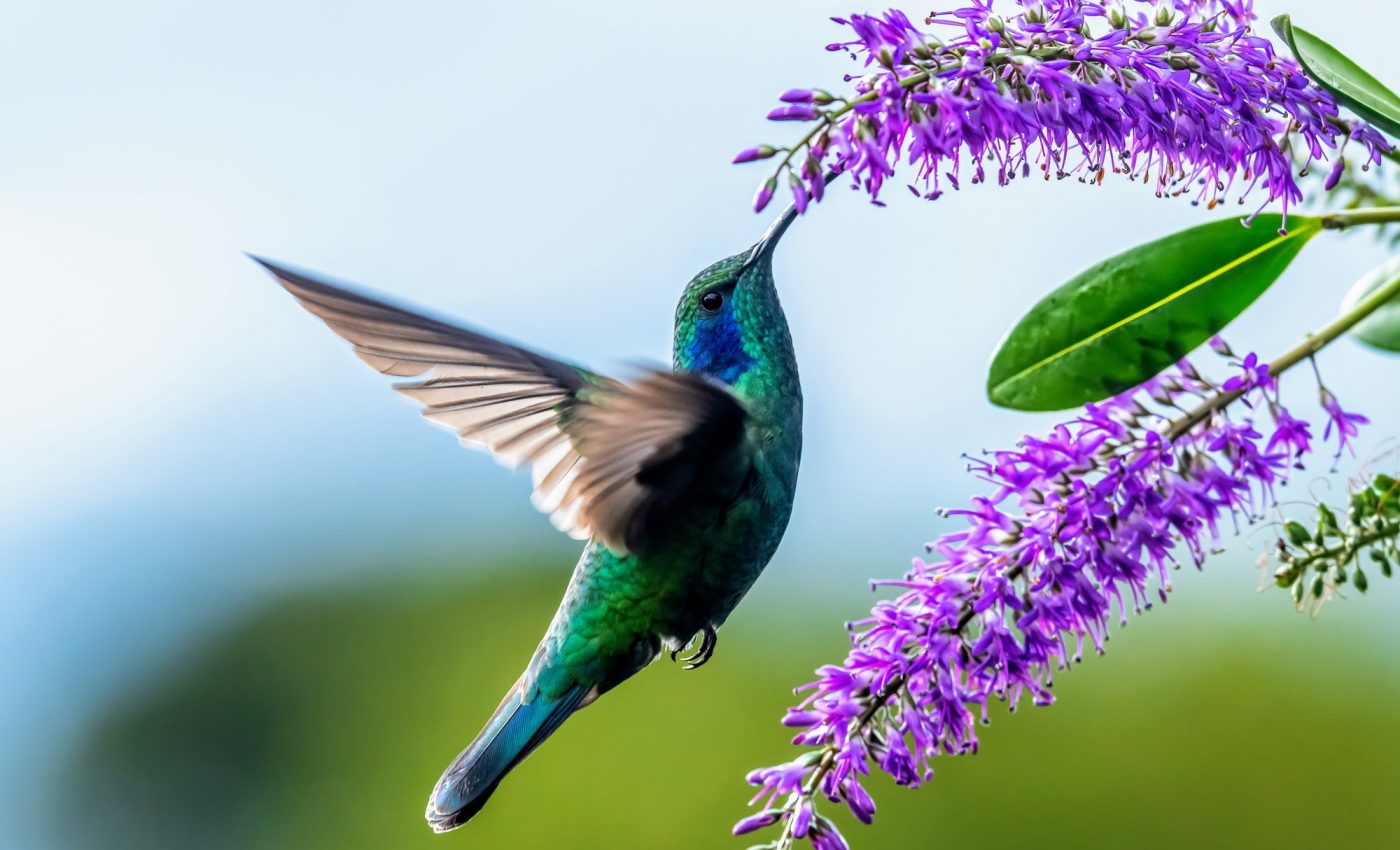
Hummingbirds have an amazing sense of touch for precise navigation
Hummingbirds are fascinating creatures known for their ability to hover near flowers with remarkable precision. While the flight mechanics of hummingbirds are well-studied, less is known about how their sense of touch contributes to this precision.
Specific neurons respond to touch
A new study led by the University of California, Los Angeles (UCLA) has found that hummingbirds create a 3D map of their body using neurons in specific forebrain areas, responding to gusts of air on their feathers and skin.
The experts discovered that air pressure’s intensity, influenced by proximity to objects, is picked up by nerve cells at the base of the feathers and in the leg skin, and transmitted to the brain to gauge the body’s orientation relative to an object.
Touch perception and hummingbird navigation
Zebra finches were found to have similar brain organization but with less sensitivity in some areas, suggesting these areas aid specialized hummingbird flight dynamics.
The research adds to the understanding of animal navigation and touch perception, potentially leading to more humane treatment of animals.
“In mammals, we know that touch is processed across the outer surface of the forebrain in the cortex,” said corresponding author Duncan Leitch, a professor of integrative biology at UCLA. “But birds have a brain without a layered cortex structure, so it was a wide-open question how touch is represented in their brains.”
“We showed exactly where different kinds of touch activate specific neurons in these regions and how touch is organized in their forebrains.”
Clusters of neurons assist in hummingbird flight
The researchers used electrodes to observe neurons firing in real-time by gently touching the birds with cotton swabs or puffs of air. A computer amplified the signals from the electrodes and converted them to sound for analysis.
The experiments confirmed that touch for the head and body is mapped in different regions of the forebrain and showed for the first time that air pressure activates specific clusters of neurons in these regions.
The scientists found large clusters of brain cells reacting to wing edge stimulation, helping birds adjust flight, and that feet are highly sensitive to touch, aiding perching.
How animals map touch across their bodies
Identifying receptive fields in the birds, they discovered that hummingbirds had smaller, more sensitive fields on their bill, face, and head, compared to zebra finches. “Hummingbirds were often reacting to the slightest thresholds we could give them,” Leitch said.
Understanding how diverse animals map touch across their bodies could lead to advances in technologies like prosthetic limbs or autonomous devices. However, improvements to animal welfare are perhaps a more immediate outcome of the research.
“If we can understand how animals perceive their sense of touch, we can develop practices that are less disturbing to them,” said Leitch.
Sensory capabilities of hummingbirds beyond touch
Hummingbirds have remarkable sensory capabilities that are finely tuned to their fast-paced lifestyle and feeding needs.
Hummingbird vision
Their vision is perhaps their most critical sense, being extremely keen and capable of seeing a broader spectrum of colors than humans.
This includes the ability to perceive ultraviolet light, which enhances their ability to locate flowers that reflect UV light and are rich in nectar.
Additionally, their eyes are positioned to provide a wide field of view, allowing them to detect motion and potential threats quickly as they dart from flower to flower.
Sense of hearing
Their hearing is also well-developed, though not as extraordinary as their vision. It helps them detect predators and navigate through their environment, but it’s less essential for finding food.
Unlike many birds, hummingbirds do not have a strong sense of smell, which is somewhat unusual given their reliance on flowers for sustenance. However, this lack is compensated for by their exceptional visual acuity.
Sense of taste
While taste is less studied in hummingbirds, they are believed to have an innate preference for sweet flavors, aligning with their dietary needs for high-energy nectar.
This preference guides them to flowers with the most rewarding nectar, aiding in their survival and efficiency as they feed.
The study is published in the journal Current Biology.
—–
Like what you read? Subscribe to our newsletter for engaging articles, exclusive content, and the latest updates.
Check us out on EarthSnap, a free app brought to you by Eric Ralls and Earth.com.
—–













